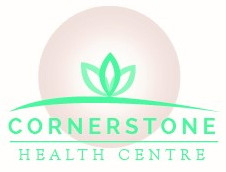Georgetown Cervical Spine Pain: MRI-Seen Changes, & Plan for Care
Studying the cervical spine of neck pain patients with MRI imaging can be interesting, confusing, and/or (non)directive for treatment planning. Dr. Butwell always considers imaging through the lens of the clinical symptomatology and spinal exam. Georgetown neck pain with imaging-revealed changes in the cervical spine will get a treatment plan based on both imaging (if/when available) and clinical exam findings.
MRI is an amazing technology. It is used commonly to evaluate intervertebral disc degeneration. When spine pain continues without relief while undergoing care for an extended period of time, performing imaging is logical and follows today’s guidelines for back pain management. The imaging findings must be correlated with the clinical symptomatology seen in the clinical exam to direct the care for optimal relief. Modic Changes – vertebral bone endplate and bone marrow changes - are commonly noted when radiologists read the MRI and classify the level of disc degeneration with level 1 being the least degenerated and level 3 being the most degenerated. More lumbar spine studies have been performed to correlate back pain symptoms with imaging findings. In the cervical spine, the studies are scarcer. A review of 14 research studies regarding the connection between neck pain and/or cervical spine disc degeneration to MRI-revealed Modic changes reported that cervical spine Modic changes were present in 5% to 40% of the images. Patients whose MRIs revealed Modic changes described more neck pain and disability. Their imaging also demonstrated more cervical disc degeneration. (1) Recently, one MRI study of cervical spines of neck pain and shoulder stiffness patients stated that no classification system of cervical disc degeneration showed any relationship to clinical symptoms. However, the researchers did explain that vertebral endplate changes may be connected to clinical symptom presentations. (2) Disc degeneration and vertebral changes causing pain can be addressed with chiropractic care.
TREATMENT PLANNING
When [[companyname treats patients with MRI imaging showing Modic changes, researchers and clinicians have been challenged to correlate effective non-surgical treatment options. Review of studies currently published about the treatment of Modic change associated back pain, in this case it was low back pain, found that spinal manipulation was proposed as an option. The review listed insufficient support for medication use and rigid lumbar brace wearing, controversial use of antibiotics, and low evidence for exercise therapy to decrease pain intensity. (3) Talk about imaging being interesting, confusing, and/or (non)directive! One thing your Georgetown chiropractor proficiently and safely provides is spinal manipulation for neck pain and back pain relief often before and/or in spite of imaging. Dr. Butwell keeps doing what works for our patients.
CONTACT Dr. Butwell
Listen to the PODCAST with Dr. Matthew Scott on the Back Doctors Podcast with Dr. Michael Johnson as he shares the effective, gentle treatment with the Cox® Technic System of Spinal Pain Management for his patient with cervical spine disc degeneration and herniation that allowed him to avoid spine surgery.
Schedule your next Georgetown chiropractic appointment with Dr. Butwell. MRIs and Modic changes will not mislead your chiropractor when it comes to establishing a neck pain relieving treatment plan for your cervical spine issues.

